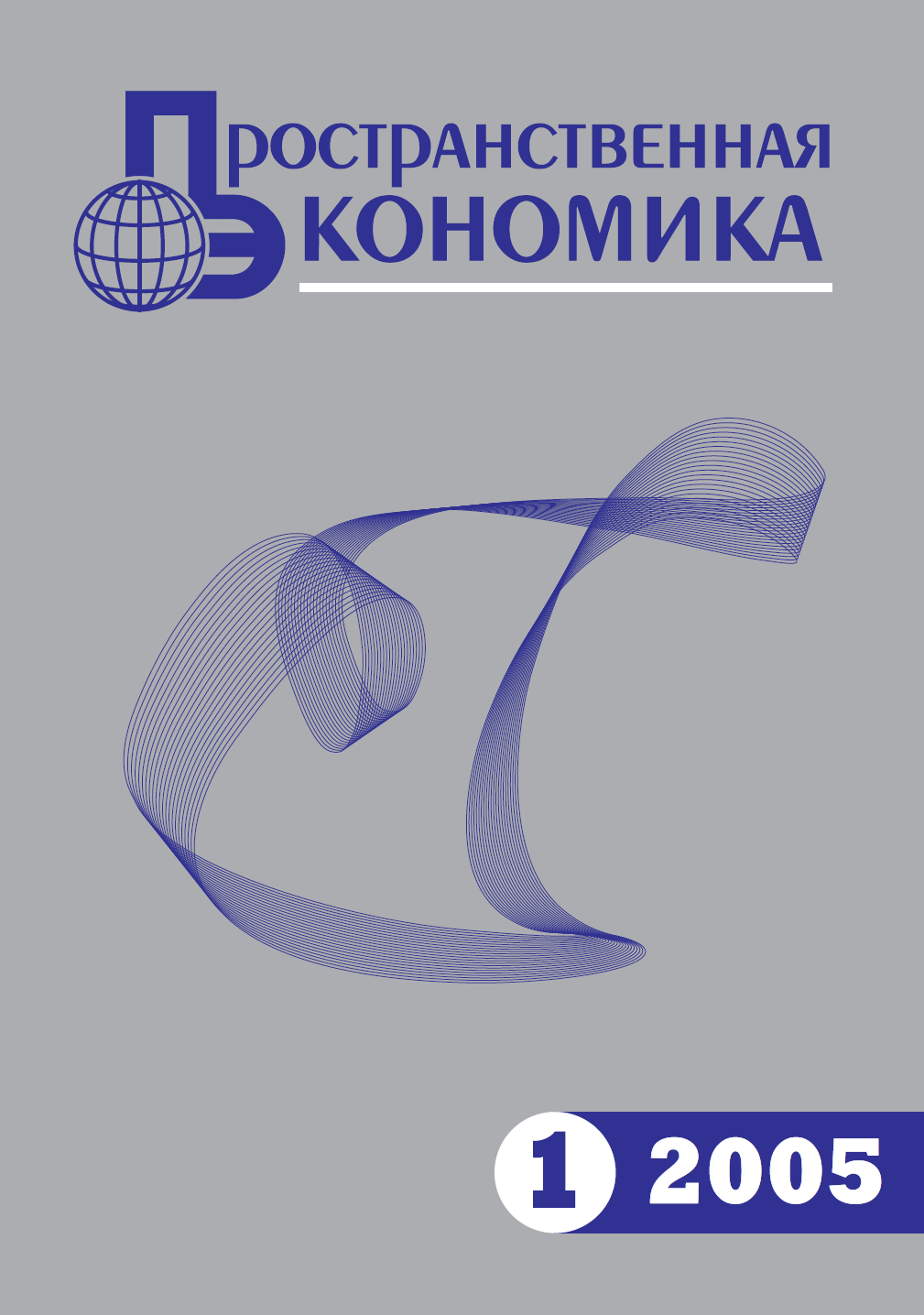| In the section | Surveys |
| Title of the article | Regional Differences in the Dynamics of Industrial Production in Russia: Modern Trends |
| Pages | 148—169 |
| Author 1 | Leonid Markovich Grigoryev Candidate of Economics, Chief Adviser The Analytical Center for the Government of the Russian Federation 12, Akademika Sakharova Ave, Moscow, Russia, 107078 This email address is being protected from spambots. You need JavaScript enabled to view it. ORCID: 0000-0003-3891-7060 |
| Author 2 | Alexander Valeryevich Golyashev Candidate of Geographical Sciences, Deputy Head of Department for Research Works The Analytical Center for the Government of the Russian Federation 12, Akademika Sakharova Ave, Moscow, Russia, 107078 This email address is being protected from spambots. You need JavaScript enabled to view it. ORCID: 0000-0002-4016-1592 |
| Author 3 | Anna Andreevna Lobanova Research Fellow The Analytical Center for the Government of the Russian Federation 12, Akademika Sakharova Ave, Moscow, Russia, 107078 This email address is being protected from spambots. You need JavaScript enabled to view it. ORCID: 0000-0002-5174-2325 |
| Author 4 | Victoria Aleksandrovna Pavlyushina Adviser The Analytical Center for the Government of the Russian Federation 12, Akademika Sakharova Ave, Moscow, Russia, 107078 This email address is being protected from spambots. You need JavaScript enabled to view it. ORCID: 0000-0002-7125-6287 |
| Abstract | The article presents the analysis of comparative dynamics of different types of industrial production in Russian regions from the viewpoint of extractive and processing industries ratio and a general industrial potential. Special attention is paid to the leading regions of the country. It is shown that the way out of recession is provided by extractive and electrical industries that improved in almost all regions in 2016 with extractive industry growing in more diversified regions. 67% of industrial deliveries in 2015–2016 are accounted for 20 regions (mainly financial-economic centers, parts of Ural, Volga and Siberia), 15 of which increased their industrial output in 2016. The task is set to estimate experimentally how much the invariance of regional industries to the changes in comparative dynamics in the industries, to distribution of resources, and to their productivity, is modified under the influences of crises and whether such changes happen at all. The article also sets out to determine how much the overall picture of industrial dynamics and comparative regional data is modified not because of resource, demand or institutional shocks, but as a result of changes in the methods of informative display of industrial dynamics due to moving to a new system of statistical recording. It is proven that the phenomenon of ‘double inertia’ – inertia of general production structure and inertia of territorial structure of production dynamics – remains a fundamental feature of national economy. This indirectly confirms the impossibility of considerable transformation of both types of mactrostructures within the current values of accumulation rate in Russian economy. |
| Code | 338 |
| DOI | 10.14530/se.2017.4.148-169 |
| Keywords | industrial production ♦ dynamics ♦ regional structure ♦ recession ♦ region ♦ Russia |
| Download | |
| For citation | Grigoryev L.M., Golyashev A.V., Lobanova A.A., Pavlyushina V.A. Regional Differences in the Dynamics of Industrial Production in Russia: Modern Trends. Prostranstvennaya Ekonomika = Spatial Economics, 2017, no. 4, pp. 148–169. DOI: 10.14530/se.2017.4.148-169. (In Russian). |
| References | 1. Bulletins on Current Trends in Russian Economy. Industrial Production Trends: Regional Differences. Analytical Center for the Government of the Russian Federation, 2017, no. 27, July. Available at: (accessed August 2017). (In Russian). 2. Golyashev A.V., Grigorev L.M. Types of Russia’s Regions: Stability and Shifts in 2003–2013. Moscow: Analytical Center for the Government of the Russian Federation, 2014. Available at: (accessed August 2017). (In Russian). 3. Grigorev L.M., Urozhaeva Yu.V., Ivanov D.S. Synthetic Classification of Regions: Basics of Regional Policy. Russian Regions: Economic Crisis and Modernization Problems. Edited by L.M. Grigorev, N.V. Zubarevich, G.R. Khasaev. Moscow, 2011, pp. 34–53. (In Russian). 4. Minakir P.A. System Transformations in Economy. Vladivostok, 2001, 536 p. (In Russian). 5. Spatial Transformations in the Russian Economy. Edited by P.A. Minakir. Moscow, 2002, 424 p. (In Russian). 6. Social Newsletter. Labor Productivity in the Russian Federation. Analytical Center for the Government of the Russian Federation, 2017, no. 9, June. Available at: (accessed August 2017). (In Russian). 7. NACE Rev. 2 – Statistical Classification of Economic Activities. Euvrostat, 2017. Available at: http://ec.europa.eu/eurostat/web/nace-rev2/ (accessed August 2017). |
| Financing | |
| Date |
